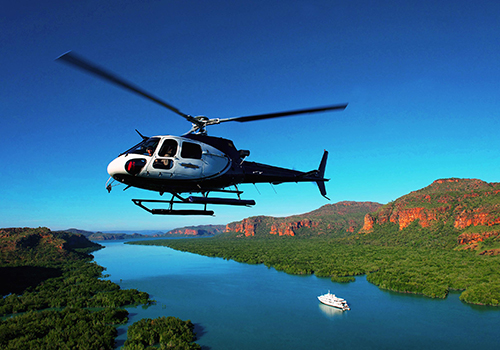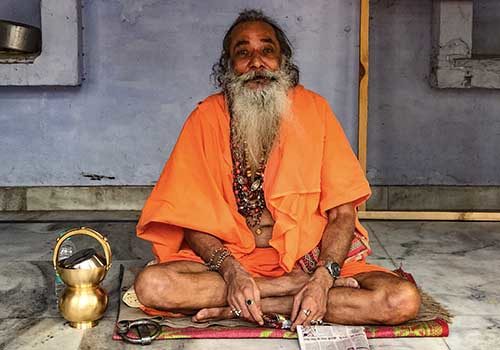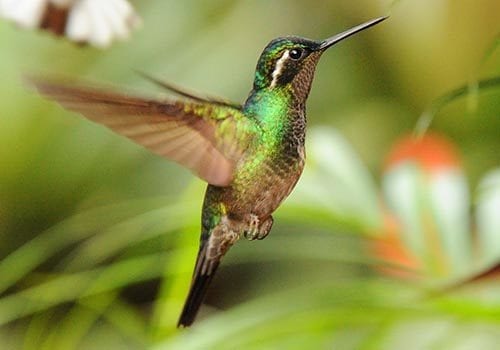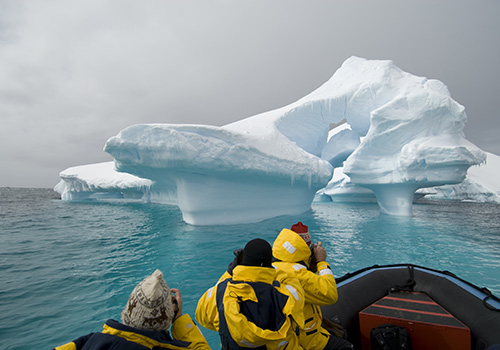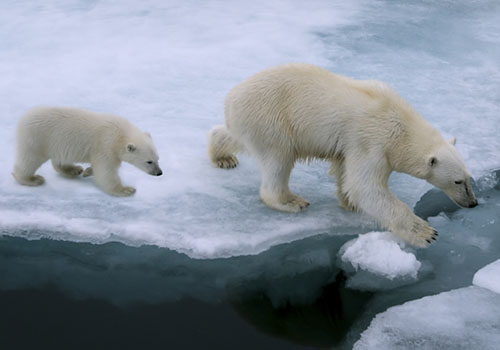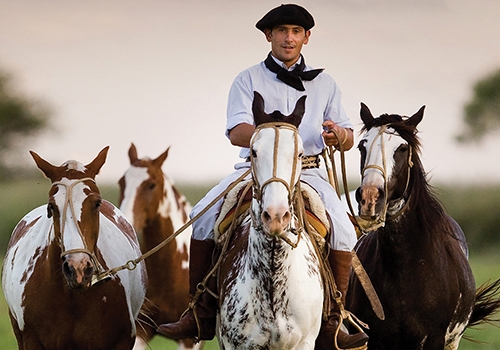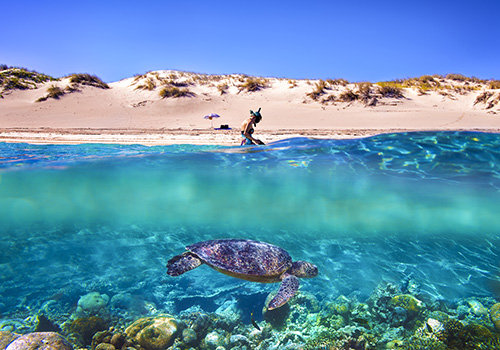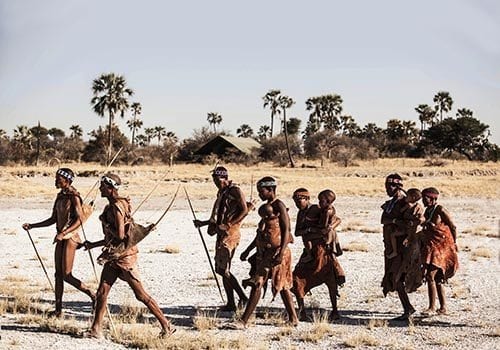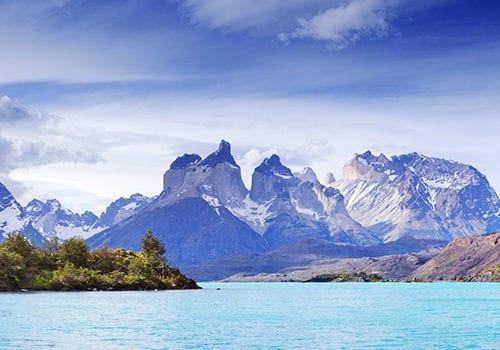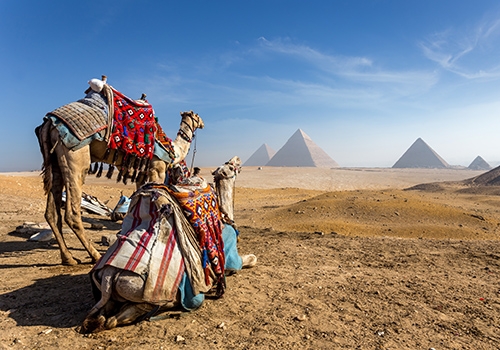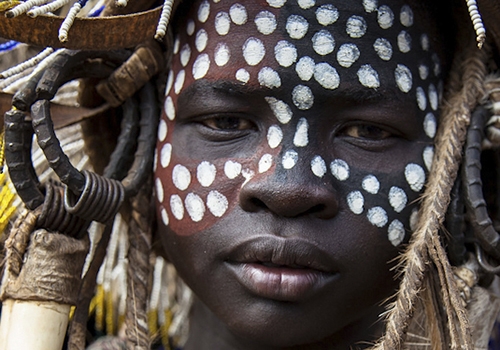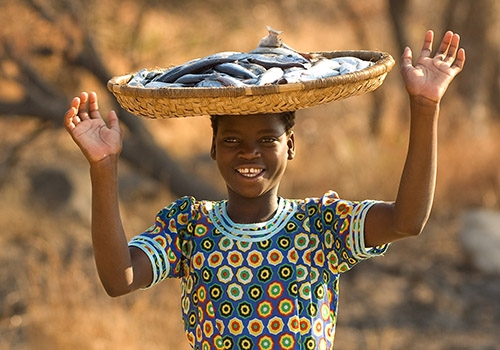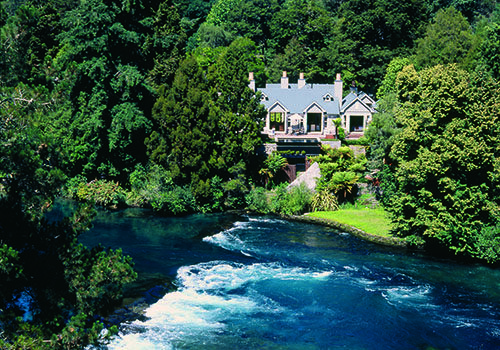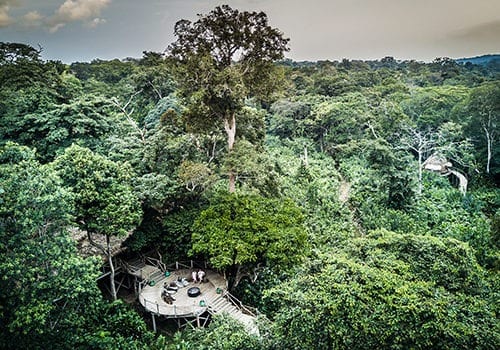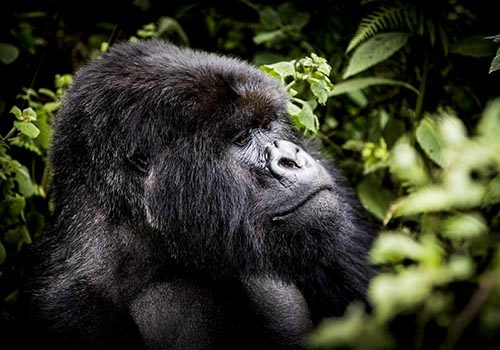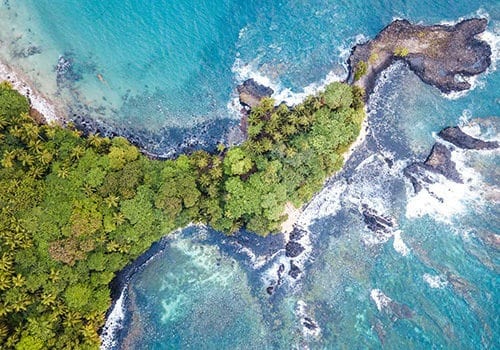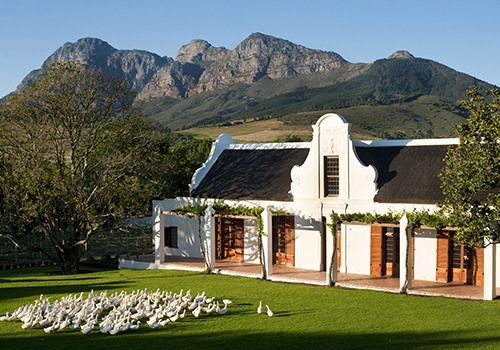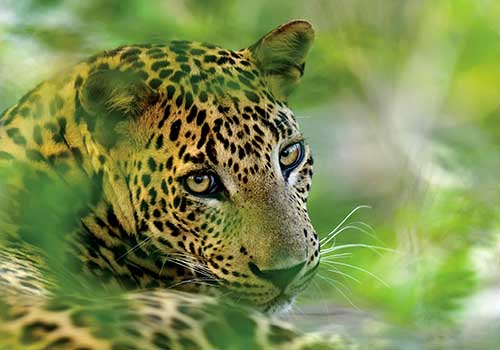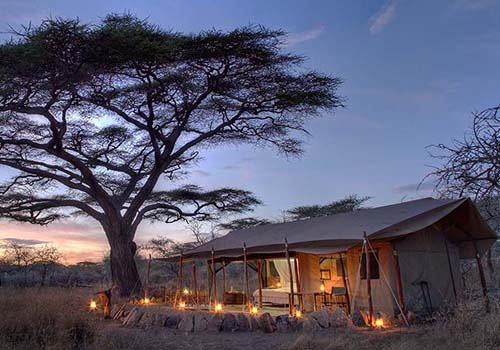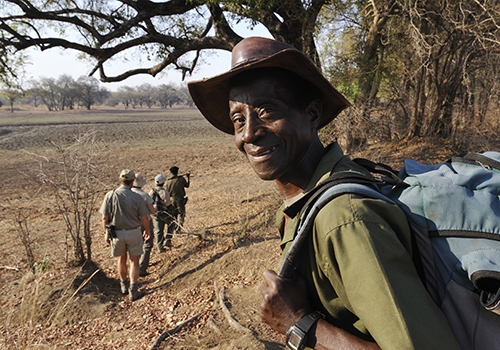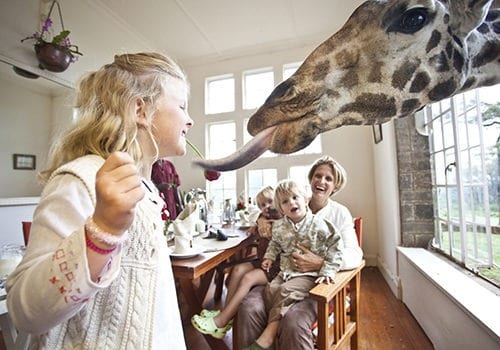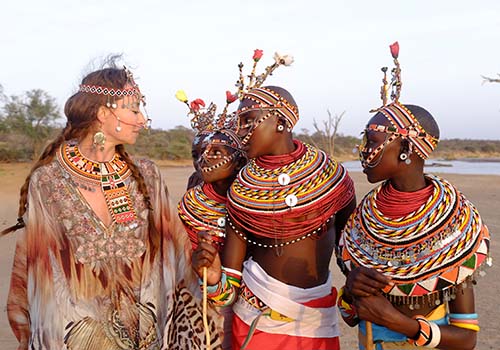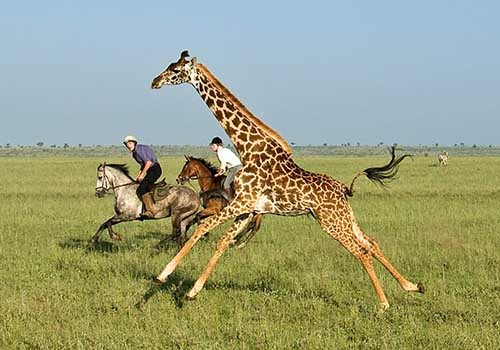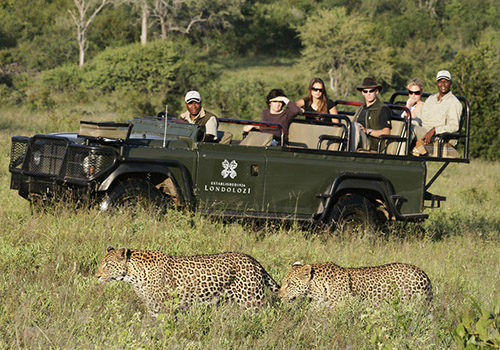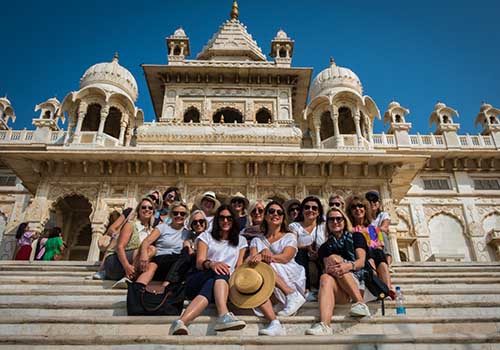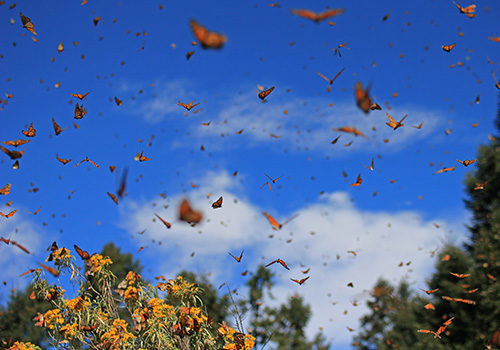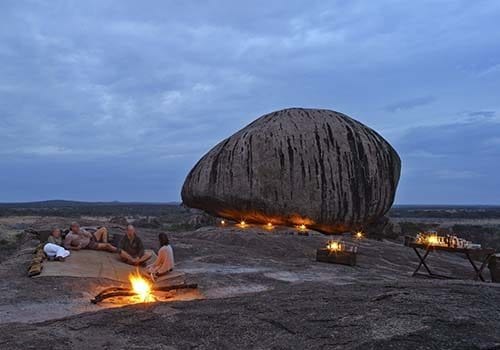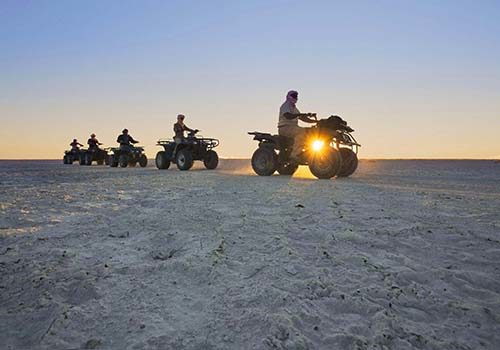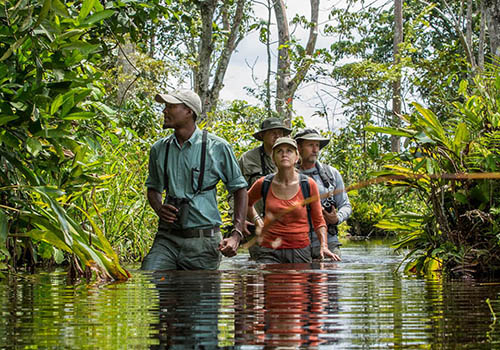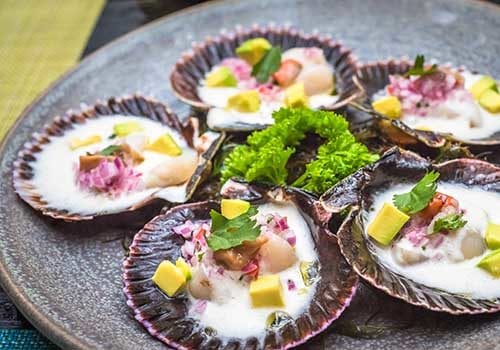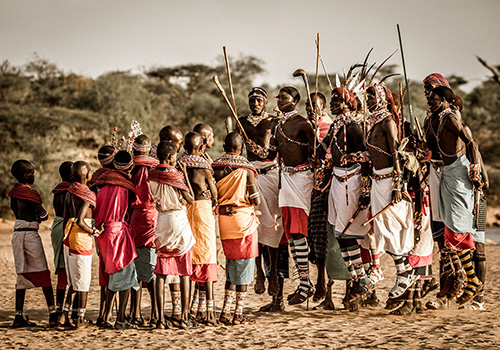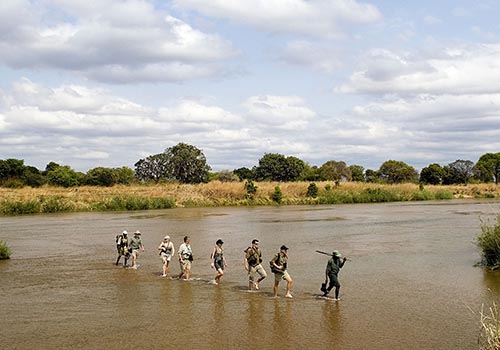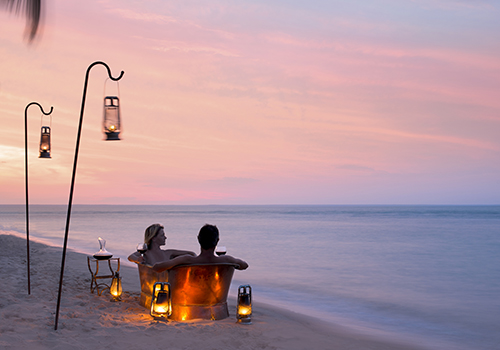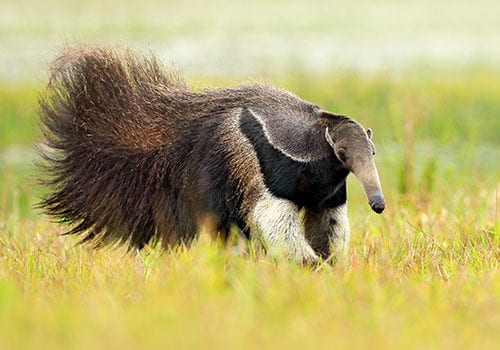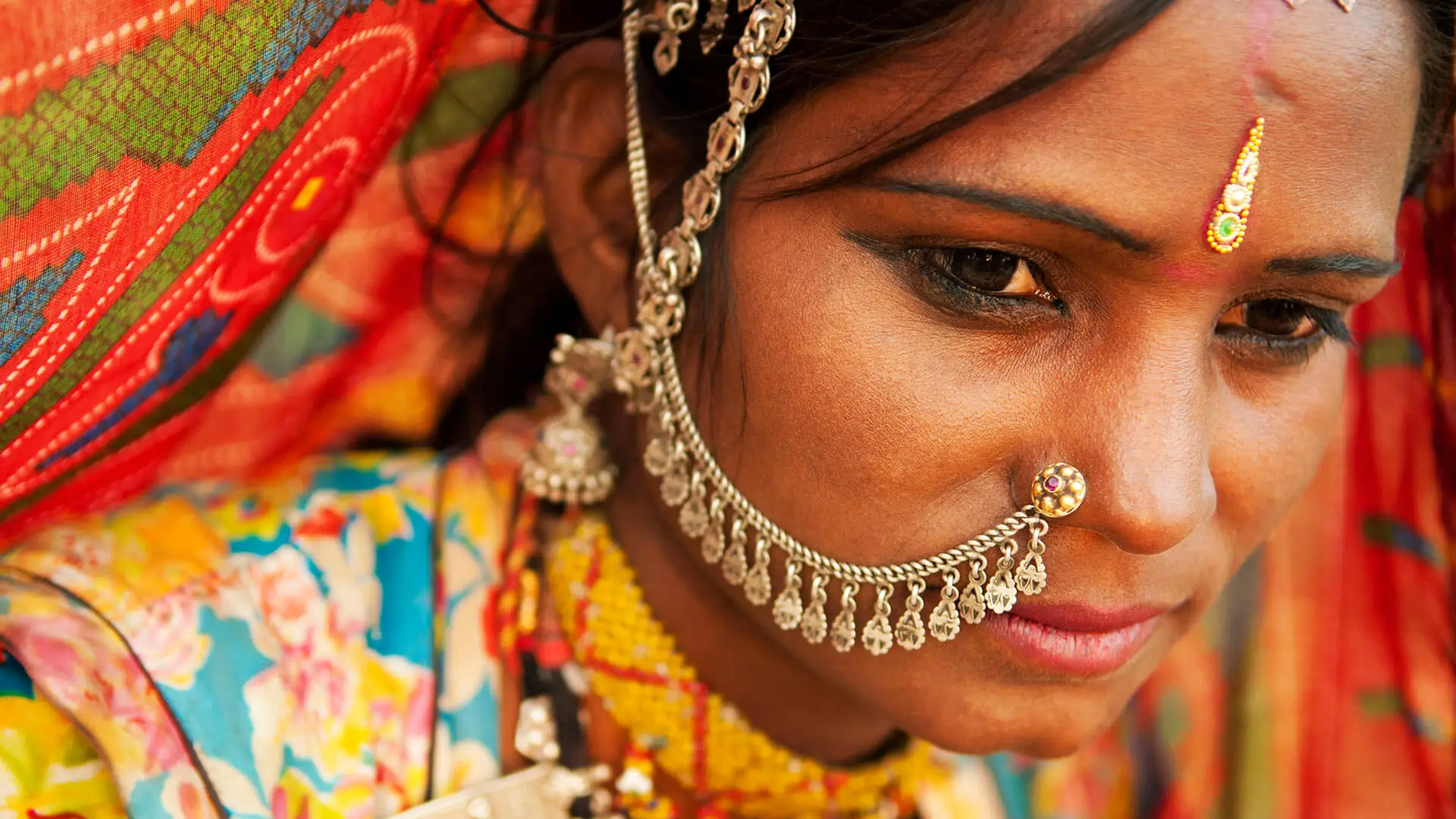
KEY INFORMATION TO PREPARE FOR YOUR JOURNEY
Thank you for choosing The Classic Safari Company for your adventure to India. This booklet includes helpful travel hints to assist you in preparing for your journey. All information provided in this booklet has been compiled with great care. To the best of our knowledge all the information is as accurate as possible, however it must be accepted that various details are subject to change according to local conditions.
PLEASE NOTE: All pre-departure information was correct at the time of writing, but should be used as a guide only since requirements can change at short notice and without warning. Consult Smart Traveller or contact the Indian High Commission or the appropriate authority prior to departure to confirm all details.
AT A GLANCE
INDIA KEY FACTS
Time: GMT +5.3 hours | AEST -4.3 hours
Capital: New Delhi
Official languages: Hindi & English is widely spoken
Religion: The predominant religion in India is Hindu (85.52% of the total population), followed by Islam (11% of total population)
Electrical Current: 230V | European 2 round pin – Type C | 3 round pins – Types D and M
Currency: Indian Rupee | INR
Australian High Commission: 1/50 G, Shantipath, Chanakyapuri, New Delhi 110021 | T: +91 11 4139 9900 | E: ahc.newdelhi@dfat.gov.au
Visa: Yes – currently required for Australian & New Zealand passport holders – refer to ‘Passport and Visa Requirements‘ for further details.
USEFUL WEBSITES
Smart Traveller – https://www.smartraveller.gov.au/destinations/asia/india
Travel Doctor-TMVC Smart Traveller – https://www.traveldoctor.com.au/destinations/travelling-india
India High Commission – https://www.hcicanberra.gov.in/
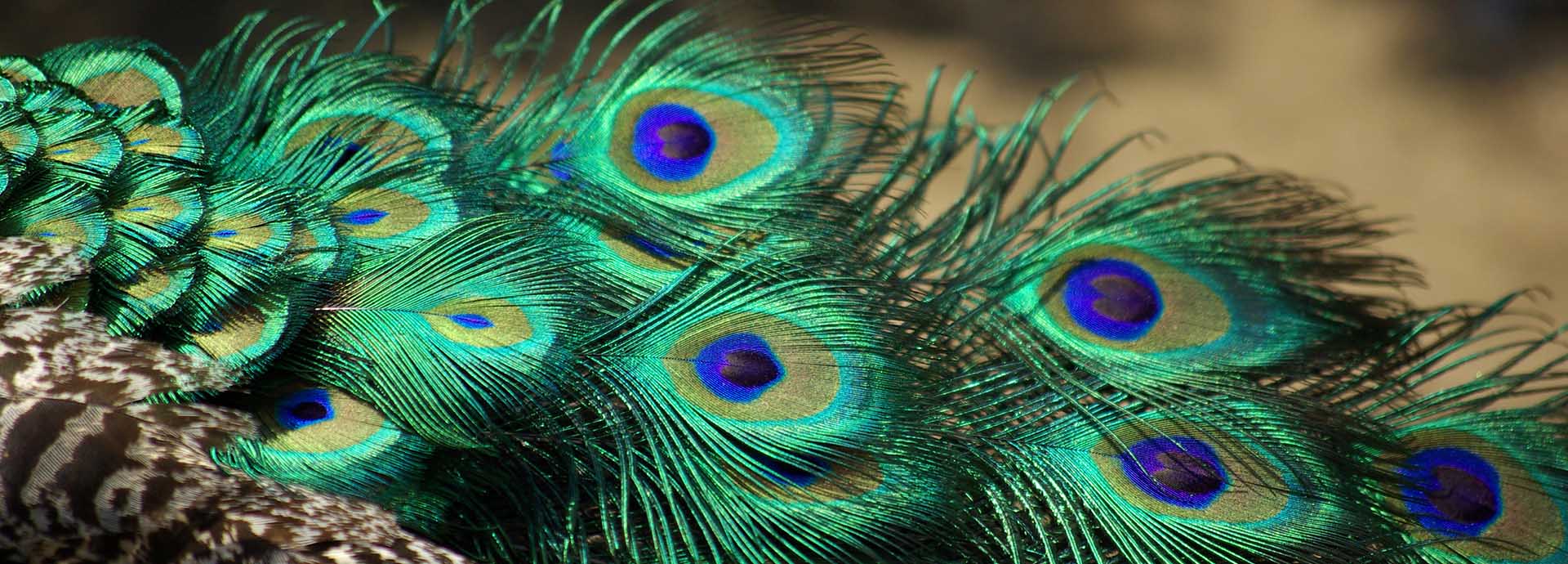
PASSPORT & VISA REQUIREMENTS
PASSPORTS
Your passport must be valid for at least six months after your return to Australia and have at least two blank pages for every entry and country you intend to visit on your journey. If your passport does not meet these requirements you must obtain a new one. The Australian Passport Office website is www.passports.gov.au.
It is a wise precaution to carry a photocopy of your passport separately and leave a copy at home. This will aid authorities in processing a new passport should yours get stolen or lost.
If you have dual citizenship and more than one passport, we strongly recommend that you use only one of these during your travels, as in some countries it is considered illegal to have two or more passports. Be sure to use the same passport on entry and exit from a country, and never surrender your passport.
If your passport name is different to your commonly used name, advise us of this and ensure your airline reservations match those of your passport name.
VISAS
Australian and New Zealand passport holders require a Visa to enter India.
You must apply for a visa before arrival. Please note that the correct Government of India website to apply e-Visas for India is: www.indianvisaonline.gov.in
A Tourist Visa (30 days) costs US$25 (July-March) or US$10 (April-June)
Apply online for the Indian Tourist Visa on Arrival enabled by ETA no less than 5 days and no more than 30 days before your date of travel. The ETA will be emailed 3-5 business days later.
Your travel consultant can assist by providing further details on how to apply, however it is your responsibility to ensure you have the correct visa and travel documents to undertake your itinerary. We are also happy to assist you with the online process, however a AU$150, per passport, per visa application, administration fee will apply.

AIR ARRANGEMENTS
PASSPORT NAME
Your airline reservation must be made in your legal name as it appears on your passport (i.e. names on tickets and passports must match). If your passport name is different to your commonly used name, advise us of this and ensure your airline reservation name matches those on your passport.
SPECIAL REQUESTS
Do let us know your seat preferences and any special requests so we can advise the airlines accordingly, however airlines do not guarantee seat preferences and some airlines now charge extra for this service.
Be sure to mention any other special requests you may have such as dietary requirements, kids meals and wheelchair assistance.
FREQUENT FLYERS
Prior to your departure ensure you have provided your consultant with your frequent flyer details so they can be added to your flight booking.
If you intend to use frequent flyer miles for your air travel you must book your own flights directly with the airline. It is a good idea to hold onto all your boarding passes in the event you have a query regarding points on your return.
DIY FLIGHT ARRANGEMENTS
If your flights are not booked by us ensure you provide your consultant with a copy of your flight itinerary so that we can share this with our ground operators who are responsible for booking corresponding ground transfers.
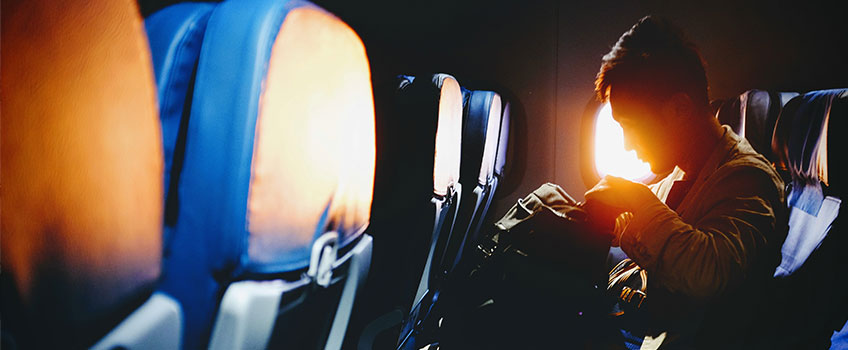
CLIMATE, WEATHER & SEASONS
CLIMATE
Climate in India varies greatly, from the arid deserts of Rajasthan to the cool highlands in the far east. But basically India has a three-season year – the hot, the wet and the cool. The heat starts to build up on the northern plains of Rajasthan around March and come May it can reach temperatures of up to 45°C. The first signs of the monsoon appear in May, with high humidity, short rainstorms and violent electrical storms. India’s main monsoon rains comes from the southwest, beginning in the south in June & sweeping north to cover the whole country by early July. The monsoon ends around October when India’s northern cities begin to cool and December nights are widely considered as ‘cold’. The southeastern coast of India is also affected by the short and surprisingly wet northeastern monsoon, which brings rain from mid-October to the end of December. The hills in this area provide respite from the high temperatures and humidity, although can be quite cold in winter. In the far south, where it never really gets cool, the temperatures are comfortably warm rather than hot at other times of the year. There are normally cooling breezes along the coast and amongst the hill stations, due to altitude.
In general the best time of year to travel in India is between November until mid April when the temperatures are cooler. Outside these times it is either extremely hot or extremely wet, or both! The most popular time to be in India, and therefore the busiest, is December to January.
Because of the diversity of temperatures & rainfall across the country a comprehensive weather chart is available below:
| DELHI | JAN | FEB | MAR | APR | MAY | JUN | JUL | AUG | SEP | OCT | NOV | DEC |
|---|---|---|---|---|---|---|---|---|---|---|---|---|
| Temperature (°C) | 8-20 | 10-24 | 16-29 | 21-36 | 26-39 | 28-39 | 28-35 | 27-34 | 25-34 | 19-33 | 13-28 | 9-23 |
| Rainfall (mm) | 17 | 19 | 11 | 9 | 18 | 63 | 120 | 160 | 88 | 10 | 4 | 7 |
| AGRA | JAN | FEB | MAR | APR | MAY | JUN | JUL | AUG | SEP | OCT | NOV | DEC |
|---|---|---|---|---|---|---|---|---|---|---|---|---|
| Temperature (°C) | 7-23 | 10-26 | 16-32 | 21-38 | 27-42 | 29-40 | 27-35 | 26-33 | 24-34 | 19-34 | 12-29 | 8-24 |
| Rainfall (mm) | 8 | 8 | 3 | 4 | 21 | 42 | 148 | 148 | 99 | 21 | 2 | 7 |
| JAIPUR | JAN | FEB | MAR | APR | MAY | JUN | JUL | AUG | SEP | OCT | NOV | DEC |
|---|---|---|---|---|---|---|---|---|---|---|---|---|
| Temperature (°C) | 9-22 | 12-25 | 17-31 | 22-37 | 26-40 | 28-40 | 26-34 | 25-33 | 24-34 | 20-34 | 14-29 | 10-34 |
| Rainfall (mm) | 6 | 9 | 2 | 6 | 9 | 36 | 128 | 139 | 51 | 15 | 2 | 3 |
| VARANASI | JAN | FEB | MAR | APR | MAY | JUN | JUL | AUG | SEP | OCT | NOV | DEC |
|---|---|---|---|---|---|---|---|---|---|---|---|---|
| Temperature (°C) | 13-22 | 13-26 | 17-32 | 23-36 | 27-36 | 27-33 | 26-32 | 26-32 | 24-32 | 21-33 | 15-29 | 9-26 |
| Rainfall (mm) | 8 | 8 | 4 | 3 | 8 | 7 | 144 | 167 | 250 | 23 | 3 | 4 |
| MUMBAI | JAN | FEB | MAR | APR | MAY | JUN | JUL | AUG | SEP | OCT | NOV | DEC |
|---|---|---|---|---|---|---|---|---|---|---|---|---|
| Temperature (°C) | 17-31 | 18-31 | 21-33 | 24-33 | 27-34 | 27-32 | 26-30 | 25-30 | 25-31 | 24-33 | 21-34 | 19-32 |
| Rainfall (mm) | 2 | 1 | 1 | 2 | 15 | 355 | 345 | 380 | 240 | 65 | 4 | 2 |
| KOCHI | JAN | FEB | MAR | APR | MAY | JUN | JUL | AUG | SEP | OCT | NOV | DEC |
|---|---|---|---|---|---|---|---|---|---|---|---|---|
| Temperature (°C) | 23-32 | 24-32 | 26-33 | 26-33 | 26-32 | 24-30 | 24-29 | 24-29 | 24-30 | 24-31 | 24-31 | 23-32 |
| Rainfall (mm) | 17 | 18 | 19 | 72 | 184 | 484 | 353 | 274 | 141 | 283 | 105 | 30 |
| DARJEELING | JAN | FEB | MAR | APR | MAY | JUN | JUL | AUG | SEP | OCT | NOV | DEC |
|---|---|---|---|---|---|---|---|---|---|---|---|---|
| Temperature (°C) | 2-8 | 2-9 | 6-14 | 9-17 | 12-18 | 13-18 | 14-19 | 14-17 | 13-17 | 10-16 | 6-12 | 3-9 |
| Rainfall (mm) | 13 | 28 | 43 | 104 | 216 | 589 | 798 | 638 | 447 | 130 | 23 | 8 |
| SHIMLA | JAN | FEB | MAR | APR | MAY | JUN | JUL | AUG | SEP | OCT | NOV | DEC |
|---|---|---|---|---|---|---|---|---|---|---|---|---|
| Temperature (°C) | 2-10 | 3-9 | 7-14 | 11-18 | 14-22 | 16-23 | 16-21 | 15-19 | 14-19 | 11-17 | 7-14 | 4-11 |
| Rainfall (mm) | 61 | 69 | 61 | 53 | 66 | 175 | 424 | 434 | 160 | 33 | 13 | 28 |
| CHENNAI | JAN | FEB | MAR | APR | MAY | JUN | JUL | AUG | SEP | OCT | NOV | DEC |
|---|---|---|---|---|---|---|---|---|---|---|---|---|
| Temperature (°C) | 21-29 | 22-31 | 24-34 | 26-36 | 28-38 | 28-37 | 26-35 | 26-35 | 25-34 | 24-32 | 23-30 | 22-29 |
| Rainfall (mm) | 14 | 2 | 4 | 19 | 49 | 54 | 74 | 100 | 104 | 221 | 267 | 118 |
| KOLKATA | JAN | FEB | MAR | APR | MAY | JUN | JUL | AUG | SEP | OCT | NOV | DEC |
|---|---|---|---|---|---|---|---|---|---|---|---|---|
| Temperature (°C) | 13-26 | 16-29 | 21-33 | 25-36 | 26-36 | 26-34 | 26-33 | 26-33 | 26-33 | 24-32 | 19-30 | 14-27 |
| Rainfall (mm) | 10 | 15 | 34 | 37 | 108 | 211 | 250 | 247 | 214 | 120 | 29 | 5 |

LUGGAGE & PACKING
LUGGAGE
Don’t take too much! You will regret bringing large unwieldy luggage & there is so much to buy in India. Most importantly please note that the trunk/boot of Indian cars are relatively SMALL. So if you travel with a large, hard-shelled suitcase you may have a problem getting your luggage to fit. Wheelie bags with soft sides are ideal, along with a small back pack or shoulder bag for day to day items. All luggage should also be capable of withstanding rugged treatment and please do note the size & weight restriction on domestic flights in India. If in doubt ask us!
WHAT TO PACK
We recommend you pack casual, light, cotton clothing for summer & extra layers in winter as it can be quite cold – jeans, sweaters and a jacket are recommended. Evenings in summer can also be quite cool so packing an extra layer is recommended.
It is best to travel in clothes that you feel most comfortable in, however you do need to be aware of cultural sensitivities. Women should dress discreetly and modestly. Whilst Indian women will bare their midriff, they never show their knees and rarely their shoulders. We, therefore, recommend you do the same to avoid unwanted attention from men and women alike. Avoid short shorts & revealing dresses – or if you do choose to wear these styles we would suggest you have a scarf or sarong with you in order to cover up should you wish, or need, to do so.
Laundry is offered in almost every hotel in India, however please note that clothes are often hand washed so avoid handing over delicate or expensive items if you are at all worried about them. Most hotels offer overnight laundry so there is no need for excess clothing. You may be requested , or may prefer, to do your own under garments.
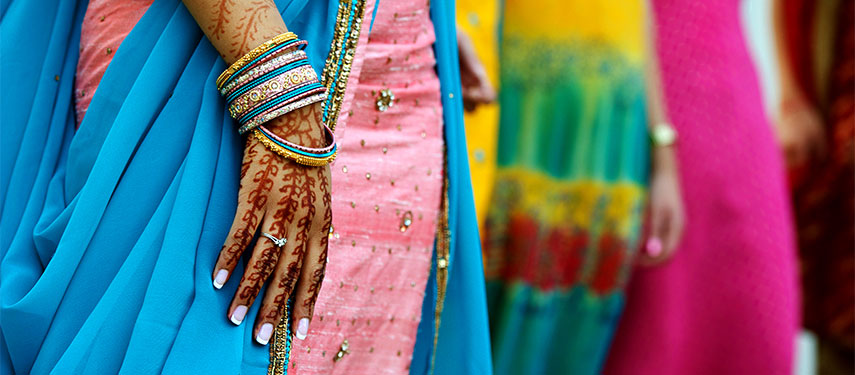
CLOTHING
- light cotton shirts or t-shirts, both short & long sleeved
- sweater/fleece
- pants – a combination of long & 3/4 pants (2 to 3 pairs)
- casual dress or skirt
- casual evening wear
- a good pair of covered walking shoes – Indian streets aren’t clean
- casual shoes & sandals or flip flops for around your hotel
- socks & undergarments
- gloves, beanie & scarf for Himalayan journeys
- PJs
- swimwear
- hat or Cap
ACCESSIORIES
- sunglasses
- spare prescription glasses
- contact lenses and saline
- pen, paper, scrap book
- a novel
- camera with spare memory cards
- chargers for all electricals
- adaptor plugs
- small torch + batteries in the event of a power outage
- sun hat or cap
- a scarf – for ladies to wear when visiting mosques or temples
- toiletries
- ear plugs – India can be noisy (as can your travelling companion)
- a water bottle
- medical kit
INSURANCE
ENSURE YOU’RE INSURED
Although we hope you’ll never need it, having a comprehensive travel insurance policy is always highly recommended. No international travel is ever entirely without risk, and even the best laid plans can go awry.
Whilst we cannot recommend the right policy for you (as only you know you and what you need), below we have provided links to sites and articles that may help you navigate your way through the choices available.
PLEASE NOTE: The information provided here is subject to change at any time. Please always read the travel insurers’ relevant Product Disclosure Statements and refer to the Australian Government’s Department of Foreign Affairs & Trade’s (DFAT) Smartraveller website for up to date travel advice and their advice on Travel Insurance.
Whichever insurer you choose please provide us with a copy of your chosen policy, insurance certificate and all emergency contact details for our records.
WHAT WE OFFER
The Classic Safari Company is currently associated with the following travel insurance providers :
Each of the above insurers has varying strengths depending on the activities included in the trip you are undertaking. Their websites are easy to navigate and once you have entered your personal details and selected your preferences – be that to reduce your excess, include cover for cruising, increase your cover for cancellation or obtain cover for a pre-existing medical condition – the website will generate a quote. If you are satisfied with what is presented, you simply need to follow the steps to purchase your insurance policy online.
At what point in the booking process should I purchase travel insurance?
It is advisable to obtain comprehensive travel insurance at the time of confirmation/paying a deposit to ensure you are covered from the moment you book.
What should I look for when selecting coverage?
Most insurance companies will cover the basics such lost luggage or flight cancellations, but levels of medical cover vary from policy to policy, and the cover for global issues, such as pandemics, has changed significantly over the past few years. This excellent article, Travel Insurance Simplified, published on 07 April 2022, details what you need to look for when selecting coverage for your next trip. Smartraveller also publishes helpful advice on Travel Insurance.
What is the impact of DFAT travel advice?
Some insurance will not cover travel to countries where the Australian Department of Foreign Affairs & Trade (DFAT) is warning Australians to “Reconsider your need to travel” (Level 3) and most don’t cover travel to places with a “Do not travel” warning (Level 4). Most international travel insurance covers visits to Level 2 countries. DFAT travel advisories can change over time and this may affect your travel insurance coverage. You should always check the advice levels on the Smartraveller website.
How much does travel insurance cost?
Costs will vary depending on your age, destination, duration of your journey, preferred excess, cancellation cover, and if you have any pre-existing medical conditions. It is important to note that the inclusions with each policy are different so price is not the only factor you should consider when choosing travel insurance – cheaper policies often don’t provide the cover you might expect. You should read the small print carefully before purchasing any travel insurance policy to ensure it is suitable for your needs.
Can I use my credit card travel insurance?
Many premium credit cards come with complimentary travel insurance. If you elect to only be covered by your credit card travel insurance it is paramount that you understand the terms and conditions, policy availability subject to your age, trip duration and destination, item limits, sub-limits and exclusions that may apply. It is also worth noting that many credit card travel insurance policies automatically exclude cover for epidemics and pandemics and may not cover charter flights.
What about reciprocal health care agreements?
If you’re travelling to one of the 11 countries for which Australia has reciprocal health care agreements, you may also be able to access free health care at your destination under these arrangements. The exact benefits available to Australians in each partner country vary. At a minimum, you can generally access emergency medical and hospital care in any of these 11 countries by simply showing your valid Australian Medicare card.
Even if you’re travelling to a country that has a reciprocal health care agreement with Australia, it’s still a very good idea to get travel insurance as these care agreements can be quite limited. Travel insurance will also cover you for everything else besides your health, such as delays or cancellations.
HEALTH & VACCINATIONS
VACCINATIONS
It may be necessary to take medical precaution prior to, and whilst travelling. As we are not qualified to offer advice, we recommend you contact your GP or the Travel Doctor-TMVC who have the most up‐to-date information available. Requirements are highly personal depending on your health profile and the activities in your itinerary. Some vaccinations must be given well in advance of travel, so we suggest seeking medical advice as soon as you start to plan your trip. Be sure to ask what vaccinations or medications may be required to enter India and to re-enter Australia.
You can also refer to SmartTraveller for a guide as to what may be required, however you should always seek professional medical advice before travelling.
In India there are fully equipped hospitals with well provisioned dispensaries. In the larger cities services of highly qualified and often overseas-trained doctors/specialists are available. Most first class hotels also have doctors on call.
Please ensure you advise us of any allergies or medical conditions prior to travel.
We also recommend that you have a dental check up prior to leaving home.
If your itinerary includes travel to the Himalayas be sure you are aware of the symptoms of altitude sickness and you carry the recommended medication.
STAY HEALTHY ON YOUR TRAVELS
There is no reason to get ill in this part of the world as long as you are sensible. Even if you are used to dining out on exotic cuisines at home, the food will still be vastly different to what you are accustomed to. Because of the different spices, herbs & the density and composition of water, you may find that there is initially an effect on your stomach. This normally passes within 48 hours as you adjust to the change in diet but if the condition persists you should consult a doctor.
To avoid health problems here are a few basic guidelines:
- Get all the vaccinations your doctor recommends.
- Do not drink the water unless you know it has been purified or boiled. Never drink the water from the tap – use the flask in your room or ask for boiled or bottled water. You may wish to carry purification tablets with you.
- Do not eat uncooked vegetables or meat, peel all fruit before you eat it, avoid salads and only eat food which has been recently cooked.
- Avoid ice in your drinks (unless the hotel has a water purification system).
- Be very particular about personal hygiene, keeping your hands very clean.
- We do not recommend you eat from street vendors unless you are brave!
- Cover up – use insect repellent, mosquito nets and wear long, loose, light-coloured clothing
- Don’t swim in fresh water unless told it is safe to do so
NOTE: If you have the appropriate level of cover you may be able to claim a rebate through your private health insurance under your extras cover for part of the cost of your vaccines and anti-malarial medications. We recommend you check with your private health insurance company.
PERSONAL MEDICAL KIT
Travelling with a comprehensive Medical Kit is as important as your preparation prior to departure. Below is a list of basic items that are a suggestion to combat minor ailments.
- Water purification: most stomach problems arise from water so taking a supply of water purification tablets is wise. Purification tablets can, however, affect the taste of water so you may wish to carry a water bottle with a purification element.
- Travel motion sickness tablets – particularly if you get ‘car sick’
- Insect repellent and an anti-itch cream should you get bitten
- Cold & Flu remedies
- Throat lozenges
- Anti-histamines
- A course of antibiotics
- Nausea tablets (such as Stematol)
- Diarrhea tablets (such as Lomotil)
- Indigestion tablets (such as QuickEze)
- Antiseptic cream
- Aspirin or Panadol
- Anti-bacterial hand wash & a small packet of tissues/hand wipes
- Blister pads, bandaids and/or steri strips
- Malaria Tablets – if they have been recommended for the destination you are visiting and/or the time of year you are travelling
- Personal sanitary items
- Eye drops and/or contact lens solution
- Sunscreen & lip balm
- Any prescribed medication – please also take a copy of your prescription with you
SPENDING TIME IN THE HIMALAYA
No other mountain range deserves the kind of respect the Himalaya do in terms of altitude. If your travels in India include walking or trekking in the Himalaya you may experience some form of altitude sickness, depending how high you travel. High altitude refers to heights that are between 2,000 & 3,500m above sea level. Very high altitude is 3,500 to 5,500m and extremely high altitude is considered above 5,500m above sea level.
The very best way to prevent altitude sickness is to give your body enough time to get used to the rarefied air. A slow and steady ascent is vital, along with adequate hydration. Your body is constantly losing fluid in the high, dry environment. Almost all altitude problems can be avoided if symptoms are recognized and acted upon. The warning signs are headache, lack of appetite, nausea, feeling of tiredness and sometimes vomiting. It is imperative you speak to your guide or host should you be experiencing any of these symptoms. And most importantly ask your doctor or the Travellers Medical & Vaccination Centre for advice before travelling.
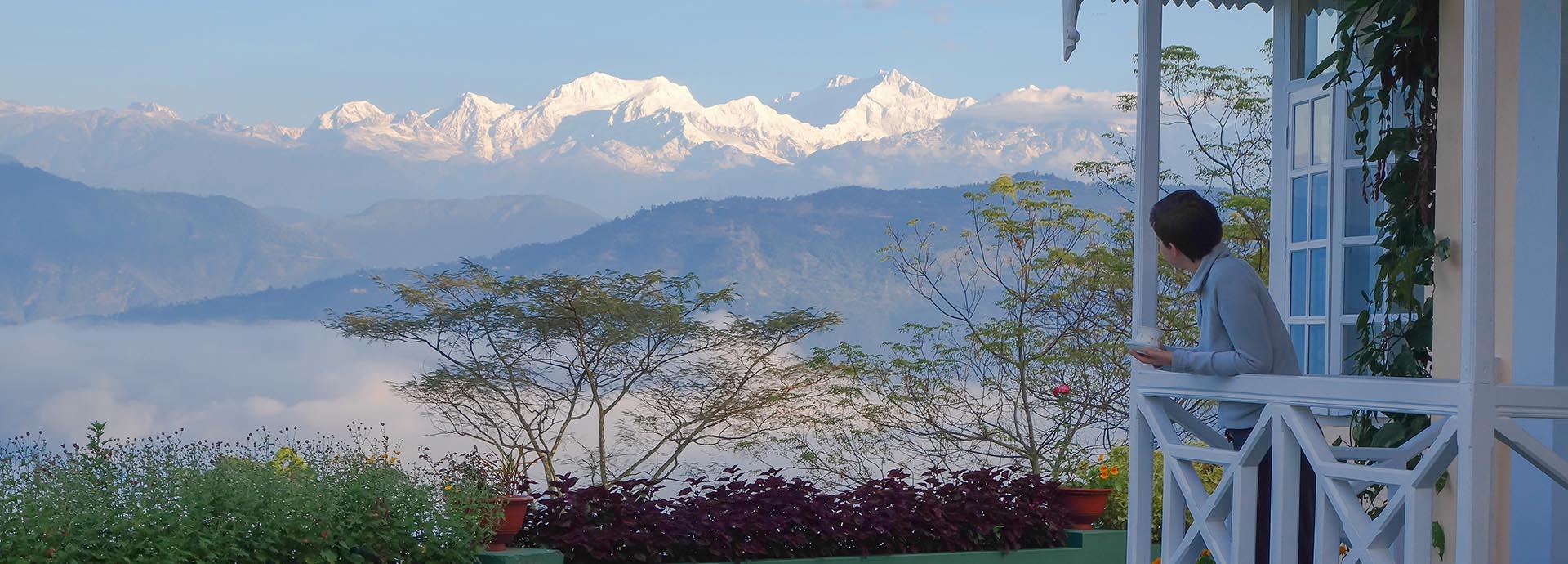
FOOD & DRINK
FOOD & DRINK
India has an amazing variety of non-vegetarian and vegetarian cuisine and contrary to what you may have heard, not all Indian food is hot and spicy. Most dishes, especially in the North, are not hot – only richly garnished to provide exciting flavour. You will find excellent restaurants that serve Indian, Chinese and continental food. The larger cities are also catching on to the ‘fast food’ chains and these days you can find pizza parlours and hamburger bars.
Alcohol is freely available in wine shops and the Indian brands ‘Sula’ or ‘Gosvenor’ are quite good – and relatively affordable compared to imported wines (many from Australia). Alcohol is also served in bars & restaurants in all major hotels. Restaurants elsewhere are, however, often not licensed to serve liquor. The 1st and 7th day of each month and the three national holidays are ‘dry’ days and liquor outlets are closed. Gujarat & Nagaland are completely ‘dry’ states in India. Please do note that it is against the law to drink whilst travelling on Indian trains.
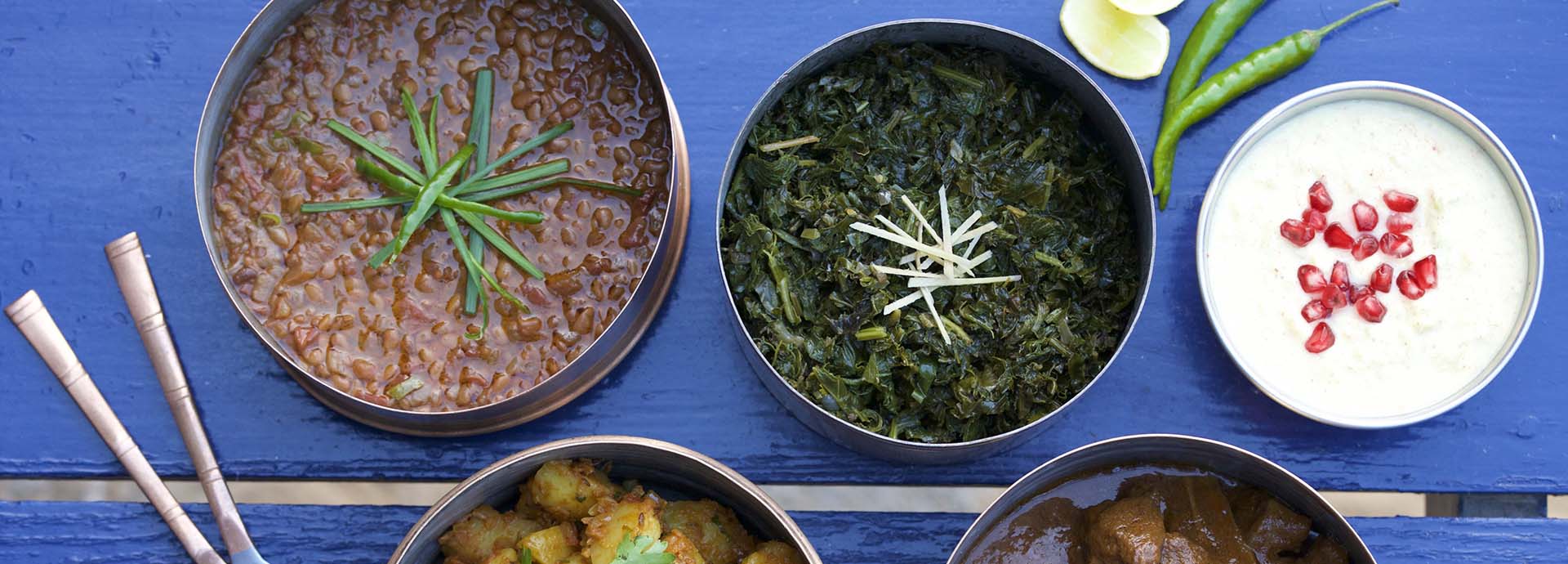
MENTAL PREPARATION
WHAT TO EXPECT – MENTAL PREPARATION
No one word can describe the subcontinent of India. Here you can literally find everything – from serene temples to fiery festivals, snow-covered mountains to endless deserts, timeless bazaars to modern cities, spiced cuisine to fasting holy men.
Travelling in India is quite different to other countries. Even if you have travelled before in Asia, and other third world countries, be prepared – you may suffer from culture shock.
In terms of population, India is the second largest country in the world, with it’s big, sprawling, bustling and fascinating cities, each with thousands of years of history. However, if you are not used to metropolitan areas of such size, your senses will most likely be assaulted and you may find India’s larger cities a little overwhelming at first. When travelling in Delhi, Mumbai, Chennai, or anywhere in India for that matter, here are some points you should keep in mind:
You will be travelling to an exotic and often underdeveloped part of the world, where local people have a totally different outlook on life, which is, of course, one of the main reasons for going. In India you will see poverty & hardship and will most likely be approached by touts & beggars – more so in the large cities than in the smaller villages. It is strongly advised not to give them money. This is usually the most difficult aspect of India that foreigners must deal with. If you do wish to donate to a social initiative please speak with your guide who will let you know which programs directly benefit individuals and their greater community.
When walking through some areas people will approach you trying to sell you things. Unless you want to buy something, it is best to ignore them.
TIPS FOR NEGOTIATING
- When travelling by auto-rick shaw or taxi negotiate the price BEFORE you get in
- You are likely to be quoted twice the actual price – so start negotiations at half the amount
- Don’t be afraid to walk away as this often gets you the price you were after
- If you really like it, buy it. You may not find that item again
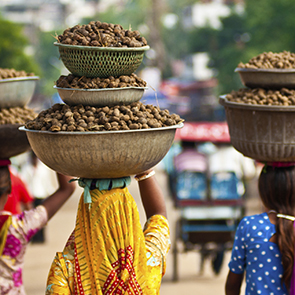
By international standards, much of India can be seen as very dirty. It is not unusual to see men spitting on the roads, & public toilets will be a shock & should be avoided wherever possible. You are likely to see a lot of garbage on the streets and you will definitely see cows wandering around.
In developing countries, transport & other facilities are often strained so delays do occur, but part of being in India’s big cities is experiencing all the sights, smells and sounds that come with it. Delhi’s roads are overcrowded and chronically jammed. It is not uncommon to see vehicles speed through red lights, drive on the wrong side of the street or swerve to miss the (sacred) cows that wander about. You will also hear car horns honking everywhere you go, every minute of the day. It’s best to just get used to it and enjoy the ride.
There is also a distinct lack of privacy in this country of a billion people. It’s important to understand that the naturally friendly, curious Indian, sitting too close, staring too long and asking too many questions, sincerely believes he is behaving in a polite and hospitable way.
We ask you to relax, take things in your stride and keep an open mind. Such attitudes will allow you to reap rewards and really enjoy your holiday. Take your sense of humour and patience, remain calm and pleasant at all times, and you will have a more rewarding and wonderful time!

AIRPORTS & TRAVEL
TRAVEL BY AIR
Bureaucracy reigns supreme in India’s International and Domestic Airports. You will pass through security check after security check, but it is all in effort to maintain your safety, so take a deep breath and go with the (slow) flow.
On arrival into India immigration can be a little slow and baggage claim slower. There are usually money change facilities near the baggage claim area in the international airports, so you can change money here while you wait. On clearing Customs and Immigration (where you will need to show your valid Tourist entry visa) you will meet your local representative in the Arrivals Hall, after claiming your luggage. They will be holding a placard with your name on it.
Arriving on domestic flights you will meet your local representative outside of the baggage claim area.
Air networks are extensive in India and are often the best way to move from one region to another, allowing you to see the vastly different geography of India. The most common internal airlines we use are Jet Airways and Air India. Jet Airways are a privately owned airline with a younger fleet, more professional staff and far fewer cancellations and schedule changes, however their flight routing, or timing, is not always ideal for your trip.
All internal airlines sadly have frequent delays, schedule changes & tend to cancel flights with little or no warning. Should this happen to you, our local representatives will do their best to ensure as little deviation from your itinerary as possible. They will discuss the best possible solution with you and will do all they can to get you to your destination on the correct day. This may involve a route change or destination change in some instances. Please remember they are there to help and have no influence over the airline.
DOMESTIC BAGGAGE ALLOWANCE
Baggage allowance for domestic flights in India is:
Economy Class
15kg checked in + 7kg cabin baggage
Business Class
25kg checked in + 7kg cabin baggage
First Class
30kg checked in + 7kg cabin baggage
Excess baggage is INR250 per kg (approximately A$5) and is STRICTLY enforced
Checked luggage must not exceed 158 linear cms (see below)
Oversized bags are charged at INR 1000 per item (approx. $20)
Please also note that many of North India’s key tourist routes are ‘multi-stop’ (e.g. Delhi/ Varanasi/ Khajuraho/ Agra/ Delhi). These are flights that may on and off-load passengers at several destinations before arriving at the final destination. If you are joining one of these flights anywhere other than the city of origin, you will experience ‘free seating’ which means that there are no pre-allocated seats and you just choose a seat as you board.
When checking in for domestic or international flights your checked baggage will go through an x-ray machine before you check in. At the counter you will be given a small tag to put on any hand luggage. Just before you enter the departure lounge you will go through another security check where your hand luggage passes through an x-ray machine and this small tag is stamped. Please keep your boarding pass on you at all times as it is stamped as you pass through the security detectors.
TRAVEL BY ROAD
Using a private car and driver is one of the best ways to see India. It gives your itinerary great flexibility and having a driver on stand-by allows you to go where you want, when you want without having to deal with the compulsory haggling over the price of a taxi, rickshaw etc. Most of the time your car is likely to be a Toyota Innova – or similar. These cars are well maintained, clean and air-conditioned.
Road travel can be pretty hair-raising, as the roads are poor! Most have no central marking and there are no restrictions on vehicle types, pedestrians, livestock, cycles, camels, elephants or any other form of transportation. However, it is the best way to get around and we supply excellent drivers used to these unique conditions. On long drives your driver will know where to stop for quality meals and amenities breaks. It is a good idea to take toilet paper with you as the amenities often will not have any. Bottled water can also be restocked at these points.
When travelling as part of a group a coach or mini-coach will be organised to suit the group size. The coaches will be of the highest quality available. However, they do not bear comparison to western coaches. The bodies are made locally, custom made on a truck chassis.

TRAVEL BY RAIL
The India Railway System is the world’s fourth largest with a route length of over 60,000 km. Every day over 7,000 passenger trains carry over 10.5 million passengers and connect 7,100 stations. It is also the world’s largest single employer with just over 1.6 million employees. These statistics alone make rail travel in India a “must do”!
A train journey offers a unique insight into the way most Indian locals travel. Getting to your destination, however, is an experience! At times it can be uncomfortable or incredibly frustrating (since the trains are not exactly fast) but it is certainly worth doing.
Your first steps onto the train platform can be somewhat daunting. They tend to be dirty, crowded and chaotic, so prepare yourself. Fans and lights on the trains have a habit of failing at prolonged stops when there is no air moving through the carriage and toilets can get a bit rough, especially near the end of a journey (BYO toilet paper). Most challenging, are the stops. Trains will stop often and for no apparent reason. Welcome to India!
Food may be available on some trains, however, we recommend that you take your own to be safe as the quality can vary greatly. Often your hotel can prepare a snack box if you request this in advance. During and shortly after the monsoon, floods and high rivers can drastically affect rail services.
You will have a local representative with you who will have your train tickets, will find your carriage for you and will make sure you are safely on the train.
Your train tickets have the coach number and the berth numbers written on them, the compartments have passenger lists displayed outside as well. It is a very good idea to lock your baggage whilst on the train, particularly as it may be out of sight under your seat or in an overhead cradle.
TRAIN CLASSES
There are numerous classes of travel on board Indian trains.
AC1 offers 1st class air-conditioned travel, found only on the most important long distance trains. They have 2 configurations: either a 4 or 2 berth compartment with a private lockable door. You cannot pre-book or reserve a specific configuration so unfortunately we cannot advise which you will have.
AC2 is identical in layout, only it has privacy curtains, not doors.
Bedding, including sheets, blankets and pillows, is provided in AC1 & 2.
AC3 is similar to AC2 only it has 3 tier bunks and no curtains & you need to take sleeping bags etc.
AC Chairs offer comfortable upright seating ideal for day time travel; available on shorter express train journeys.
Beyond this, non-aircon carriages are offered with sleeping berths or upright seating, although ceiling fans & open windows allow for airflow.
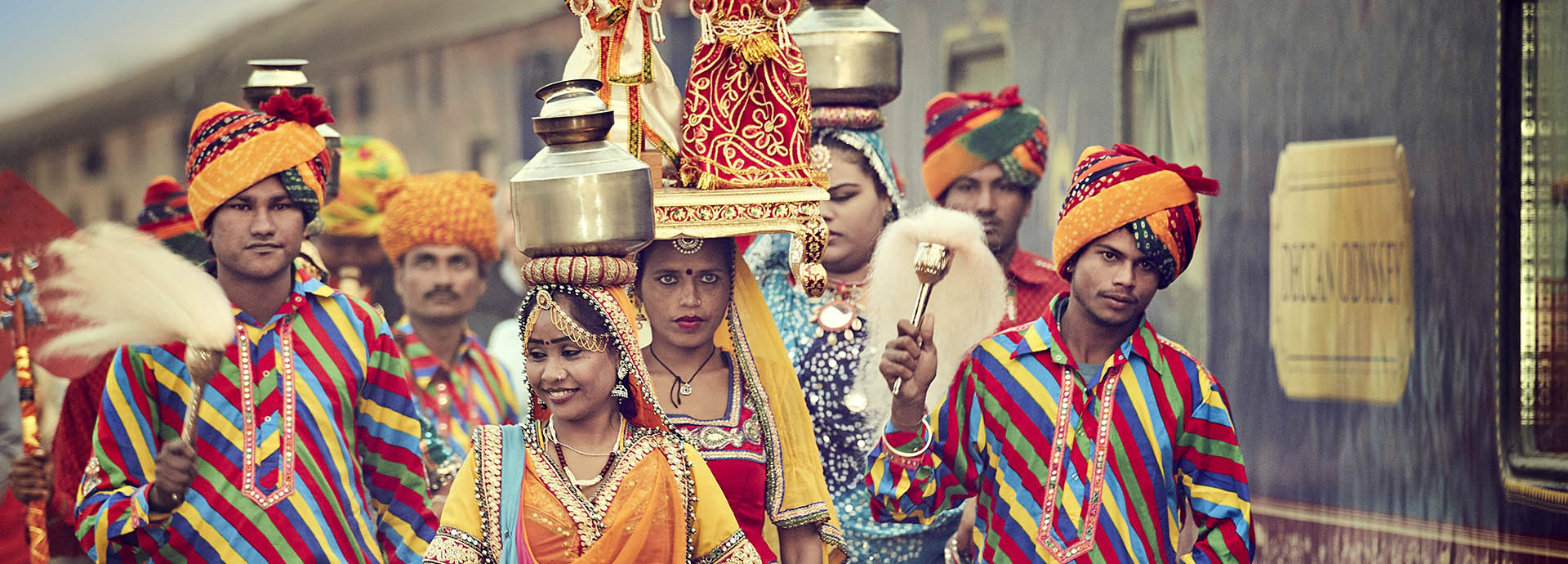
MONEY MATTERS
CURRENCY AND EXCHANGE
The Indian Rupee (INR) is the unit of local currency. You can easily purchase rupees on arrival at any international airport in India, and therefore it is not necessary (or recommended) that you purchase rupees in Australia prior to departure. It is possible to use your Australian ATM card to obtain rupees.
Most hotel accept credit cards, however it is wise to have some local money for tipping, soft drinks or any other small items.
ATM machines are both reliable and widely available in Indian cities. Please use caution when withdrawing cash, just as you would at home.
Most hotels, souvenir shops and restaurants in the major towns and cities accept most credit cards. The rate of exchange is usually good, but do not rely on credit cards as your only source of finance. Visa and MasterCard are more commonly accepted. Diners and American Express are only accepted in limited establishments so please have another card as a back up.
Credit Cards are NOT widely accepted in markets or bazaars so you should obtain rupees when you first arrive in India, or from an ATM or bank as you travel around.
TELL YOUR BANK
We highly recommend you advise your bank of your destinations and travel dates. This should prevent any of your transactions being deemed as ‘out of the ordinary’ (and possibly stopped) due to their unexpected location.
SPENDING MONEY
Your itinerary and invoice will indicate inclusions and exclusions throughout your itinerary booked by The Classic Safari Company.
As a rule most hotels throughout India are offered on a ‘bed and breakfast’ basis only – allowing you the freedom to dine out if you wish.
It is extremely difficult to calculate exactly how much each person will spend, however, we suggest you budget around A$80-$100 per person per day for extras such as additional meals, tips, drinks and personal purchases.
We generally recommend you carry a combination of cash, Travel Debit Card, Debit card and/or a credit card. Only take as much cash as you feel confident carrying and never keep your cash, credit card and/or debit card in the same place.
Of course if you plan to shop ’til you drop’ – and there is a lot of great shopping in India – then budget accordingly!
TIPPING
Tipping is an ingrained part of tourism on the Subcontinent and most drivers, guides and hotel staff rely on tips to survive. Please see our detailed ‘Tipping Guide’ (next tab) for more information.
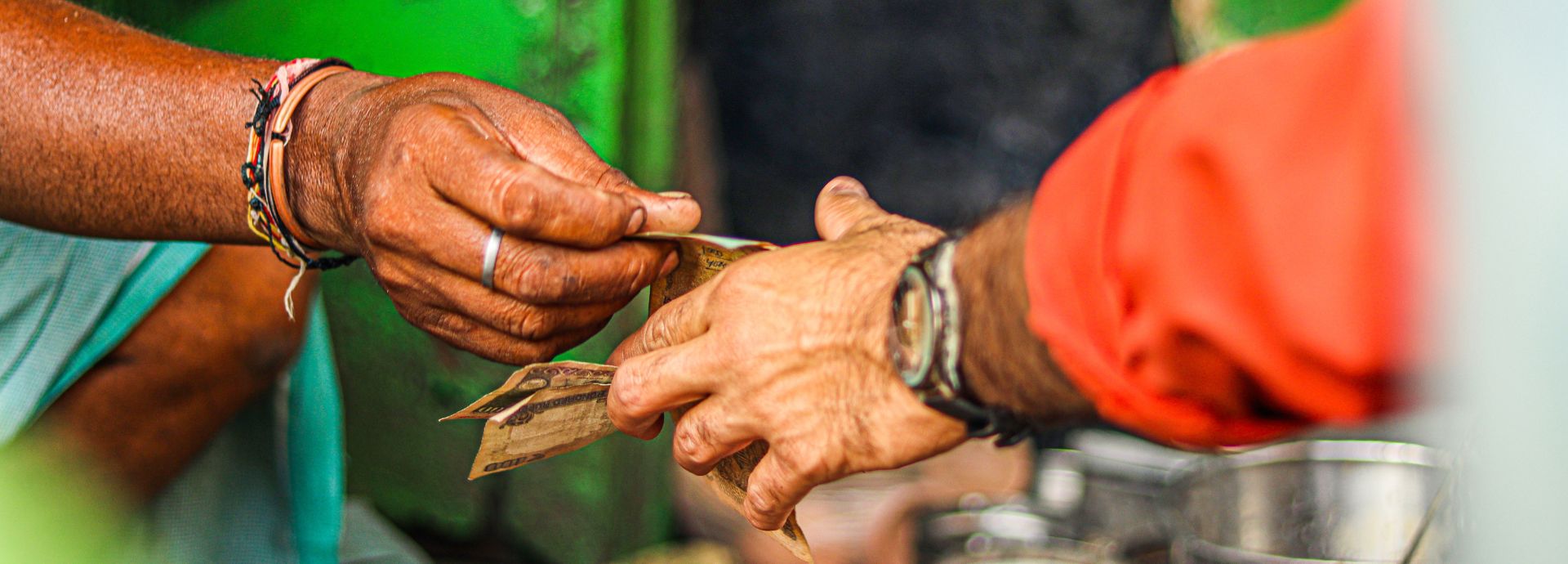
TIPPING GUIDE
Tipping in India is often called “baksheesh” and is an ingrained part of tourism. Salaries are low and tipping is regarded as an essential way of supplementing income. It also encourages excellent service in the future.
In India you will be expected to tip many people, including your tour guides, drivers and ancillary staff such as waiters, hotel porters, housekeeping and (often) bathroom attendants as you travel.
Leaving a tip is the ideal way to show your appreciation and carrying small notes in the local currency will make tipping easier.
CONVERTING AUD TO INR
Historically the exchange rate from Australian Dollars (AUD) to Indian Rupees (INR) hovers around AUD 10 = INR 500. For an accurate conversion we recommend downloading a currency conversion App such as xe.com to refer to as you travel.
The exact amount you wish to tip to show your gratitude will differ depending on the level and length of service provided, however as a general rule of thumb we recommend the following:
Airport Transfers:
INR 100 per person, per transfer paid to your driver (you may wish to pay more depending on the length of the transfer and if the driver assists with your luggage)
Airport Porters:
INR 50 per bag each time they assist
Hotel Porters:
INR 50 per bag, per hotel each time you stay
Housekeeping:
INR 100 per day, at the end of your stay. It is ideal if you leave this with a thank you note so that the staff know that it has been left for them
Restaurants:
Before deciding how much to tip in a restaurant you should check if a service charge has already been added to your bill. If the restaurant has already added a service fee this is likely to be shared amongst all the staff, so if the service you received from your waiter was worthy you may consider giving a direct cash tip of 5-10%.
Rickshaw drivers:
Round up to the nearest 100 rupees
Personal driver:
You may be with the same driver for several days and they will be invaluable in navigating you safely through the streets of India. A gratuity of INR 500 per person, per day is recommended
Guides:
Between INR 500-1000 for a full day, or halve this for a half day tour, depending on their knowledge and your experience. If you spend a few (or more) days with the same guide you should show your gratitude at the end of their time with you
Drivers and Guides in National Parks:
INR 200 for your driver and INR 500 per guide or naturalist
Bathroom Attendants:
Travel through India is often undertaken by road and you may stop at a roadside restaurant, café or service station where it is customary to pay up to INR 20 per person to use their facilities
ALWAYS REMEMBER: The above amounts are indicative only. Tipping is totally at your discretion.
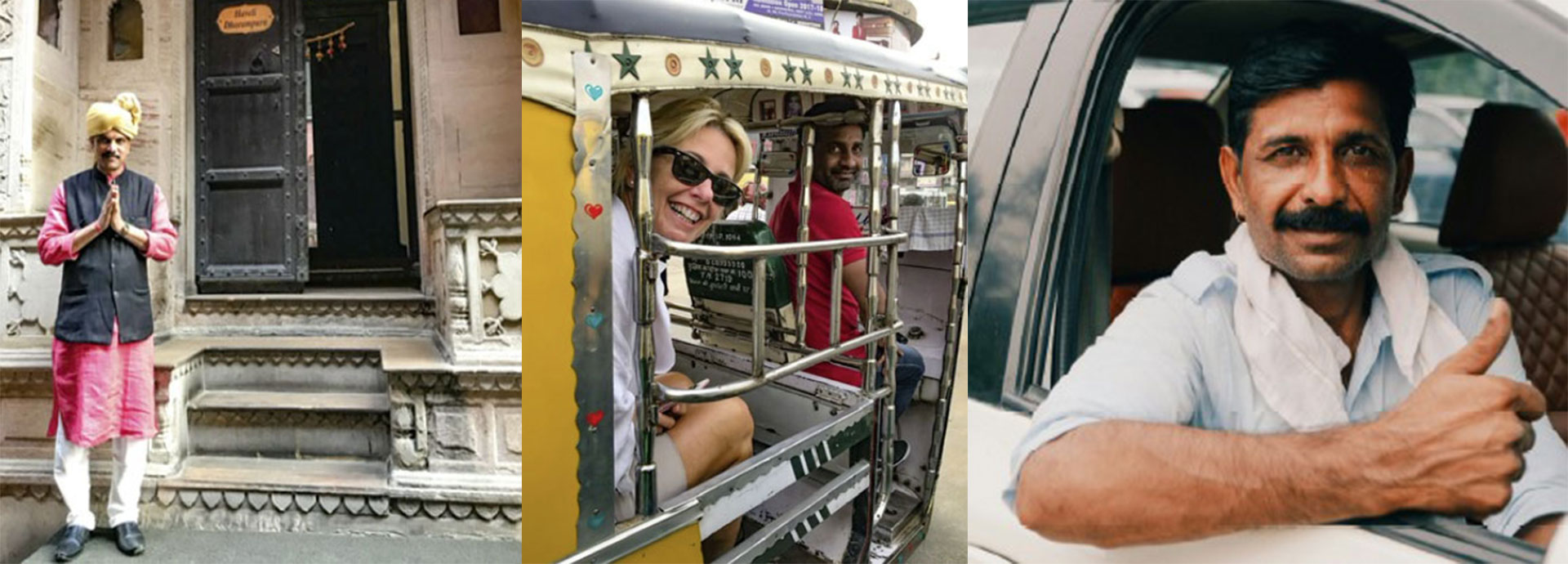
POWER, TECH & PHOTOGRAPHY
POWER
There are basically two main voltage systems used around the world: 110 Volt ‐ USA, Canada, Spain & Japan 220 Volt ‐ the rest of the world. In simple terms, the power supply available at the socket is roughly twice as powerful in 240V countries as in 110V countries.
The voltage in India is 230 Volts, therefore if you wish to use any electronic devices from Canada, the US or Japan you’ll need a voltage converter AND a plug adapter. Australia operates a 220V currency and therefore you only require an adapter for Australian appliances.
There are three associated plug types used in India, TYPES C, D and M. Alternatively you may prefer to invest in an International Travel Adaptor that provides you with more than one option.
Many adaptors also have a USB port so you can plug your smart phone, or I‐product directly into the adaptor.
For the latest & most up to date information about voltage and what adaptors to travel with refer to: www.korjo.com
ADAPTORS
India uses a 230V electrical current and there are three associated plug types, TYPES C, D and M.

SMART PHONES & DATA
Smart phones can be wonderful travel companions. Not only will they help you stay in touch with friends and family, they’ll guide you through unfamiliar cities, enlighten you on local attractions, translate foreign languages and produce great photographs.
Left unchecked they can also wreak havoc with your travel budget!
The reason is that some (but not all) of the fun and useful functions smart phones perform require the downloading of data via an internet connection. Unfortunately, if you’re paying for data roaming it can be an expensive exercise and you run the risk of returning home to an expensive shock.
If you want to make the most of your mobile device, while avoiding unexpected and unpleasant charges, keep in mind the following tips:
- Buy an International Roaming Pack ‐ think about buying a pack from your phone network before departure in order to access cheaper rates
- Remove your regular SIM and replace it with a pre‐paid SIM either purchased before departure or upon arrival. Not only will you benefit from better prices for data, voice calls and SMS, but there will be a pre‐set limit on how much you can spend giving you some piece of mind.
- Turn off global roaming ‐ the problem with data roaming is not simply the exorbitant costs travellers are charged for downloading megabytes, it’s the fact that this data is often being sucked down without you even being aware of it.
To be safe, the easiest thing to do is simply disable data roaming.
We do NOT recommend taking advantage of free-wifi in public places such as airports and malls. The connection is often insecure, and you could run the risk of data & information theft. If you do need to go online, whether to check your emails, use a handy app or make an online booking – your best option is to find SECURE free or affordable Wi‐Fi.
PHOTOGRAPHY
Photography plays an important role in any holiday. Zoom lenses are a great asset as are wide-angle lenses for landscape shots. The best over-all lens to take would be a zoom in the 70mm-300mm range. Only if you are in search of tigers, or are a keen birder, would you need a lens greater than 300mm. For digital cameras it is suggested that you bring two rechargeable batteries and ensure that you have adequate memory space.
Please respect local customs and feelings when taking photos. You may need to tip locals in order to take photos. It is forbidden to photograph certain places such as airports, dams, bridges, government buildings & military installations.
If in doubt, ask!

CLASSIC SAFARI CO TRAVEL APP
Your very own App for travel – let the countdown begin!
The CLASSIC SAFARI CO App is supplied courtesy of The Classic Safari Company. It is a very handy tool with the upside being that you can view all your travel documents on your device at any time, whether connected to the internet or not. It will be where we house all your travel documents. Our App along with emailed digital copies of your travel documents, will be all that you will require once travelling.
Therefore, it is important to take the time to become acquainted with The Classic Safari Co App, and contents, well before you travel.
To start viewing your travel documentation you will need to download, at no cost, The Classic Safari Co App on your Phone, iPad or Tablet by following these steps:
- STEP 1 : Be sure you have internet access
- STEP 2 : Open the App store on your device and search for ‘The Classic Safari Co’ or download on the Apple App Store or Google Play
- STEP 3: Once installed and opened, you’ll be asked for your User ID and your Unique Passcode. Please enter the following:
- USER ID: TCSC
- UNIQUE PASSCODE: NAME+FILENUMBER
Click accept and wait for your travel documents to download before starting your journey on the App.
NOTE: If you prefer to access your trip details and documents on your personal computer, you can do so by visiting https://web.vamoos.com/. Please use the same user ID and unique passcode provided above.
HOW TO DOWNLOAD
Open the App store on your device and search for ‘The Classic Safari Co’. Alternatively, using your device click the icons below to download on the Apple App Store or Google Play
OUR APP LOOKS LIKE THIS:

ON THE APP YOU WILL FIND:
- Your travel documents
- Destination information
- Maps
- Real time weather data
- E-tickets and flight information (if applicable).
ADDITIONAL OPTIONAL DOCUMENTS
We can also upload additional documents such as Tourist Visas, Vaccination Certificates, and your Travel Insurance Certificate if you wish to have them on hand as you travel. If you would like us to add these for you please email any additional documents in PDF format (only) and we will add them to your profile. We do not recommend adding or sharing your passport information online.
UPDATES & CHANGES
We will update all documents if and when changes occur, and prior to your departure we will furnish you with emergency contact information and any relevant travel vouchers.
OFFLINE USE
The greatest benefit of using our App is that once the initial download has occurred you will no longer require internet access to view what has been uploaded for you.
SECURITY
Please note that the software developer of our app (Vamoos) cannot guarantee the safety of personal data against identity theft, particularly if you are using a free wifi service whilst travelling. We do not recommend using free wifi services anywhere in the world.

ALREADY HAVE THE CLASSIC SAFARI COMPANY APP INSTALLED?
If you already have The Classic Safari Co App installed, to load a new trip you simply need to follow these steps:
- STEP 1: Open The Classic Safari Co App on your device and in the top left corner you will see 3 small horizontal lines (the burger menu). Click these and look for the words ‘Load New’… click this and then enter:
- USER ID: TCSC
- UNIQUE PASSCODE: NAME+FILENUMBER
- STEP 2: Wait for your travel documents to download before starting your journey on the App.
Should you have any questions about the App or the information uploaded for you please don’t hesitate to get in touch.
Thanks, have fun and let the countdown to your departure begin!
RECOMMENDED READING LIST
FICTION
A Fine Balance – Rohinton Mistry
A Passage to India – E.M. Forster
A Suitable Boy – Vikram Seth
Are You Experienced? – William Sutcliffe
Buddha and the Sahibs – Charles Allen
City of Djinns – William Dalrymple
City of Joy – Dominique Lapierre
Coronation Talkies – Susan Kurosawa
Eat Pray Love – Elizabeth Gilbert
Hindi Bindi Club – Monica Pradhan
Holy Cow – Sarah MacDonald
In Search of India – Paul Brunton
India: A History – John Keay
Inhaling the Mahatma – Christopher Kremmer
Interpreter of Maladies – Jhumpa Lahiri
Kim – Rudyard Kipling
Life of Pi – Yann Martel
Maharanis – Lucy Moore
Make me an Idol – Katherine Scholes
Midnights Children – Salman Rushdie
The Namesake – Jhumpa Lahiri
Q&A – Vikas Swarup (Slumdog Millionaire)
Sea of Poppies – Amitav Ghosh (Ibis Trilogy #1)
Shadow of the Moon – M.M.Kaye
Shantaram – Gregory David Roberts
Siddartha – Herman Hesse
Sideways on a Scooter – Miranda Kennedy
Song of the Cuckoo Bird – Amulya Malladi
Space Between Us – Thrity Umrigar
The Glass Palace – Amitav Ghosh
The God of Small Things – Arundhati Roy
The Inheritance of Loss – Kiran Desai
The Palace of Illusions – Chitra Divakaruni
White Tiger – Aravind Adiga
NON-FICTION
A Search in Secret India – Paul Brunton
Curry (A Tale of Cooks and Conquerors) – Lizzie Collingham
Freedom at Midnight – Dominique Lapierre
Gitanjali : A Collection of Indian Poems – Nobel Laureate Rabindranath Tagore
In Spite of the Gods – Edward Luce
India : Discovered – John Keay
India’s Unending Journey – Mark Tully
Liquid Jade : The Story of Tea from East to West – Beatrice Hohenegger
No Full Stops in India – Mark Tully
Shadow of the Great Game – Narendra Singh Sarila
The Honourable Company: History of the English East India Company – John Keay
The Age of Kali – William Dalrymple
The Last Mughal – William Dalrymple
The Life of Mahatma Gandhi – Louis Fischer
Travellers History of India – Stephen G Haw
EXTENDED READING LIST
We have an extended version of this reading list – with a synopsis on each book – available. Please contact us to request a copy.
Please also share any of your own recommendations with us. We are always on the look out for new reads.


